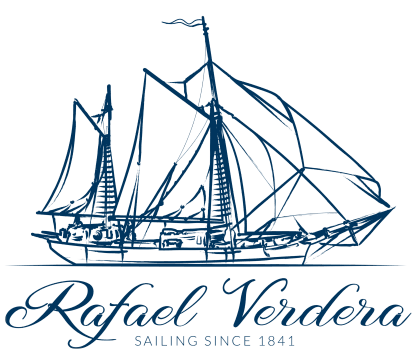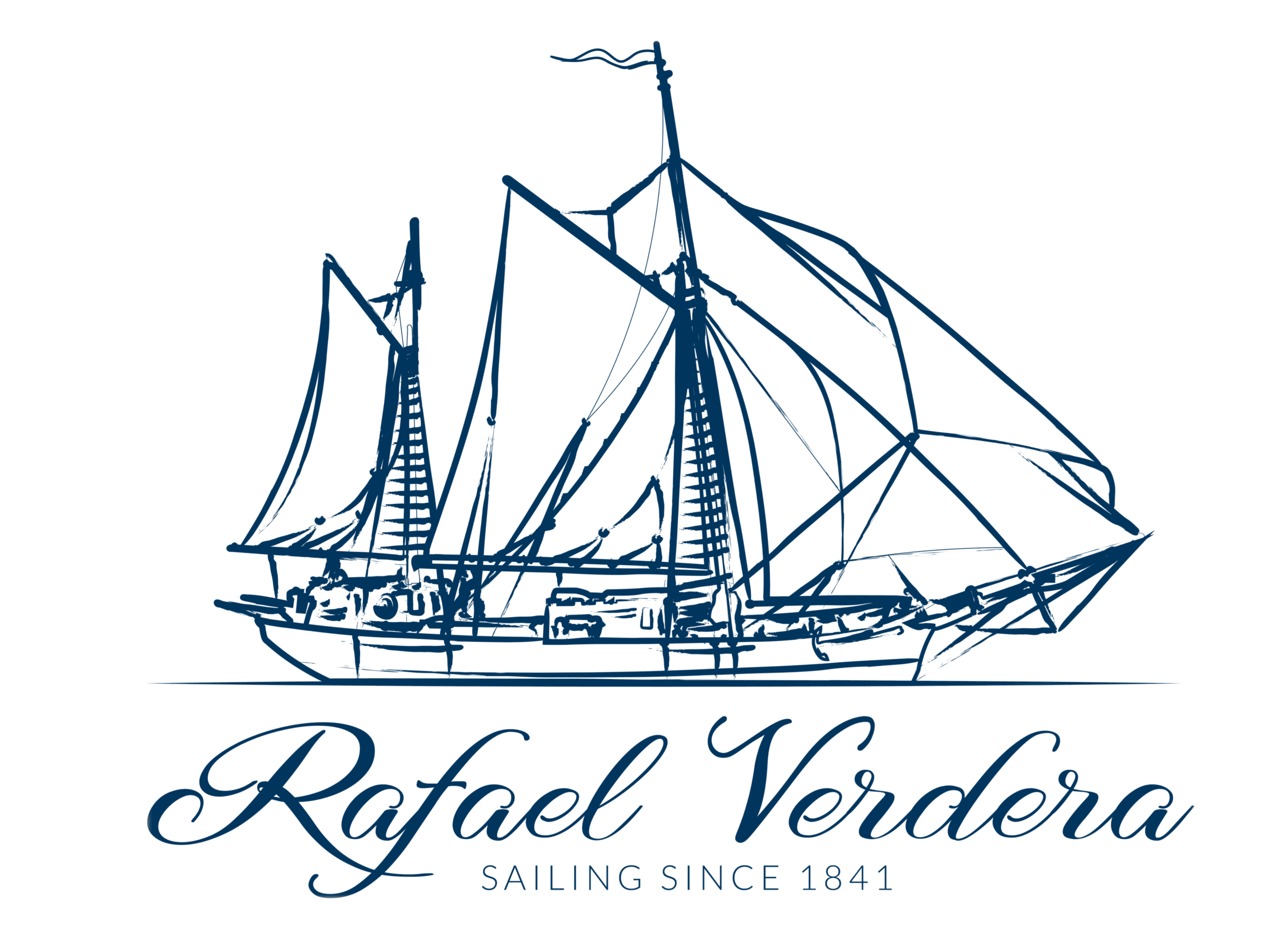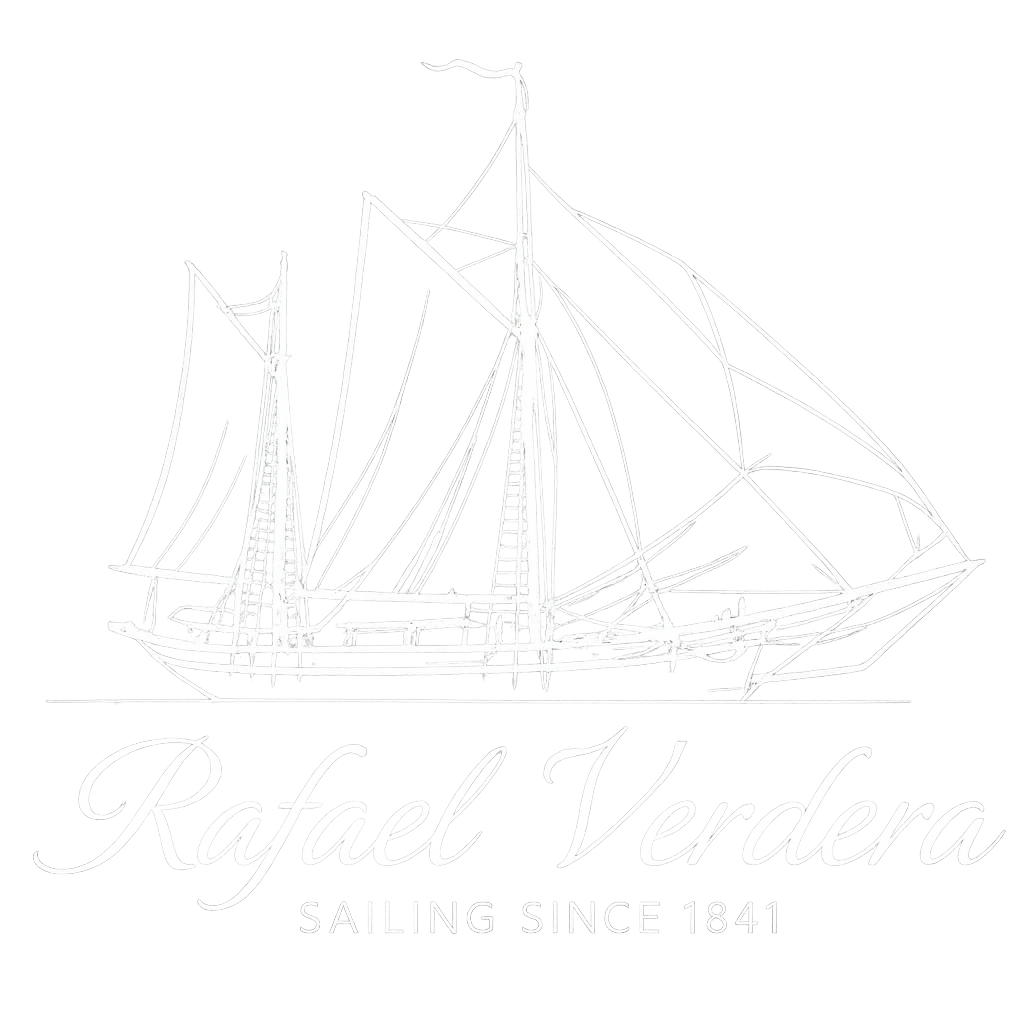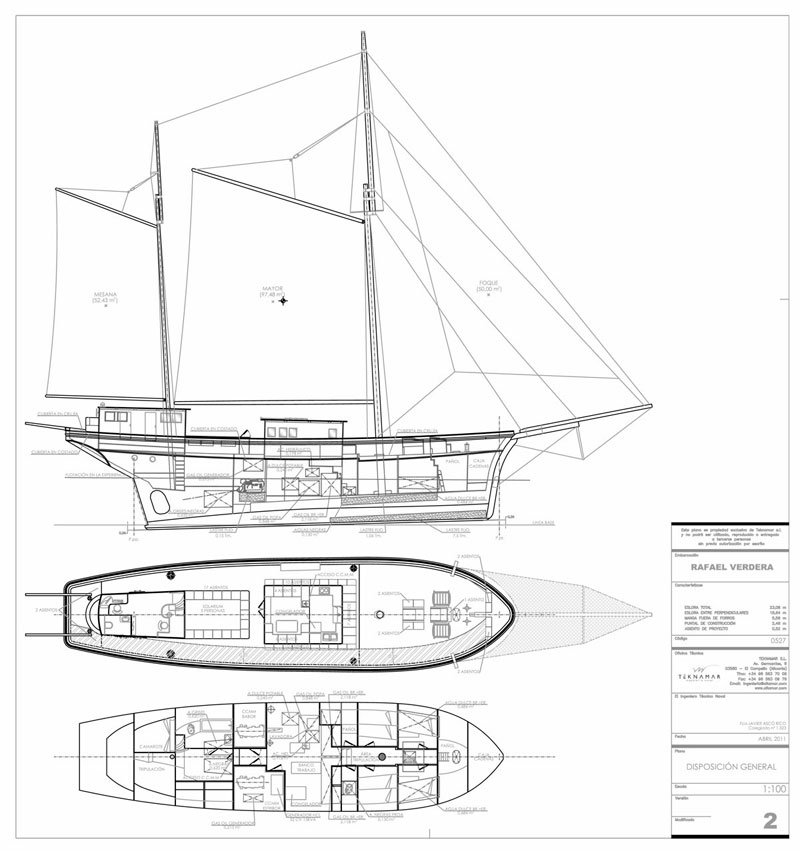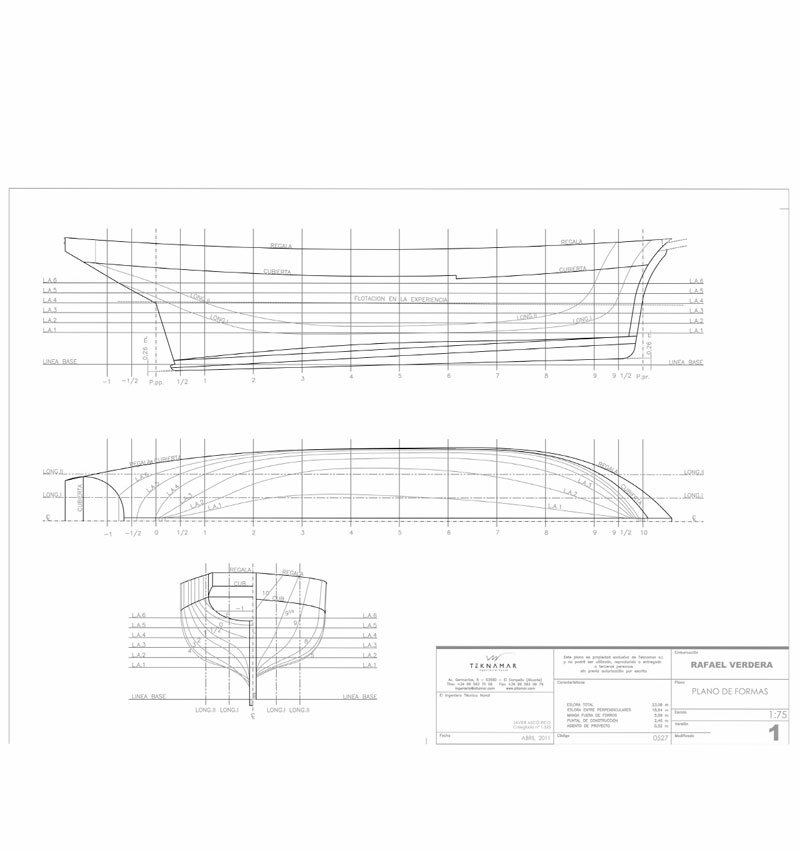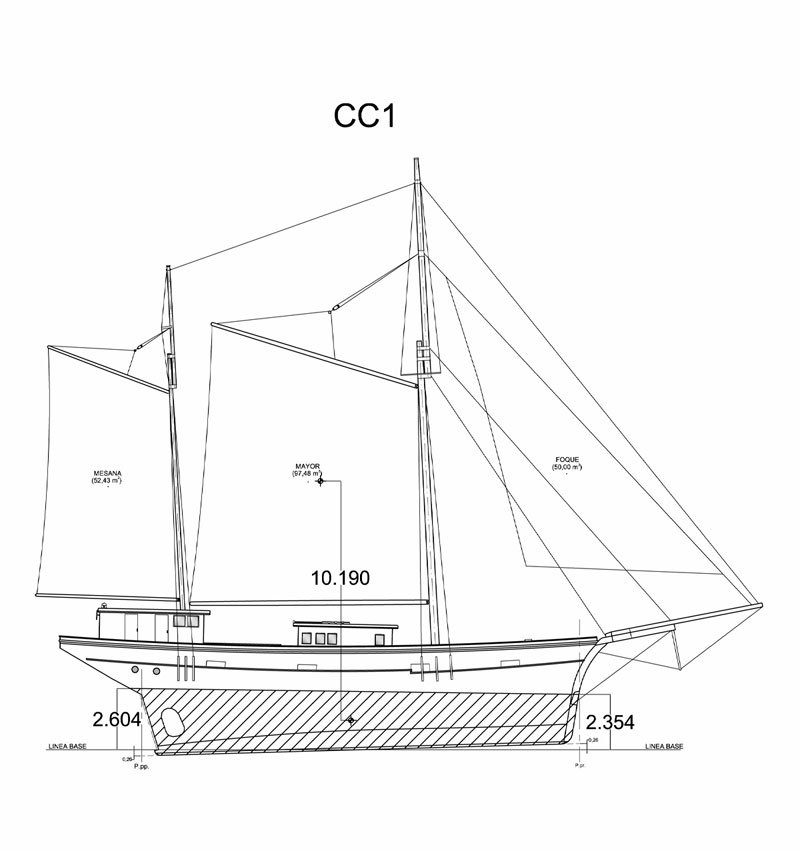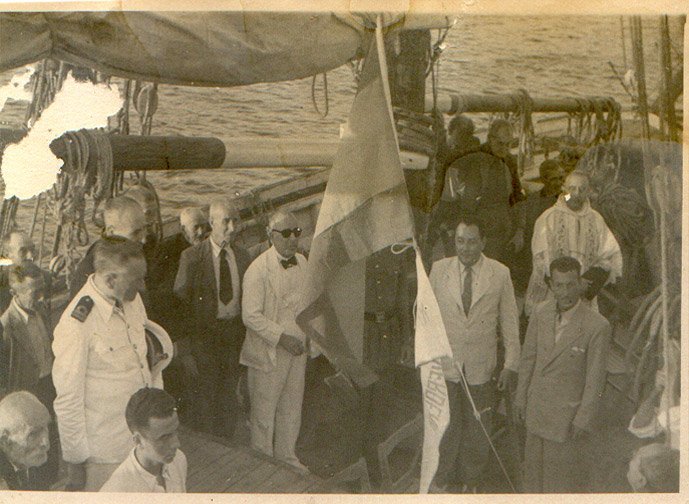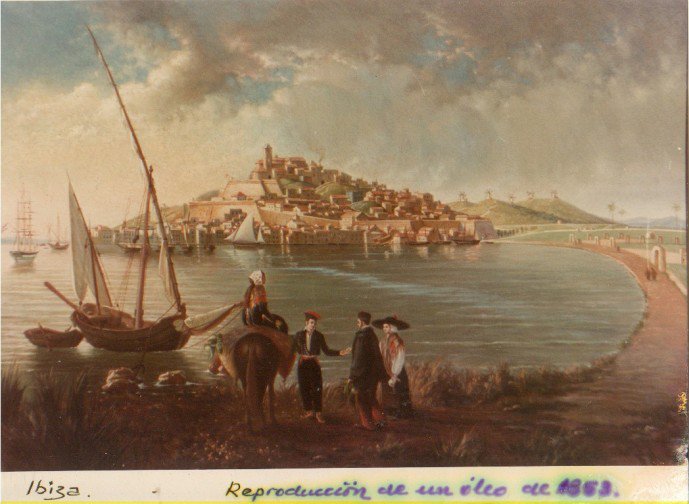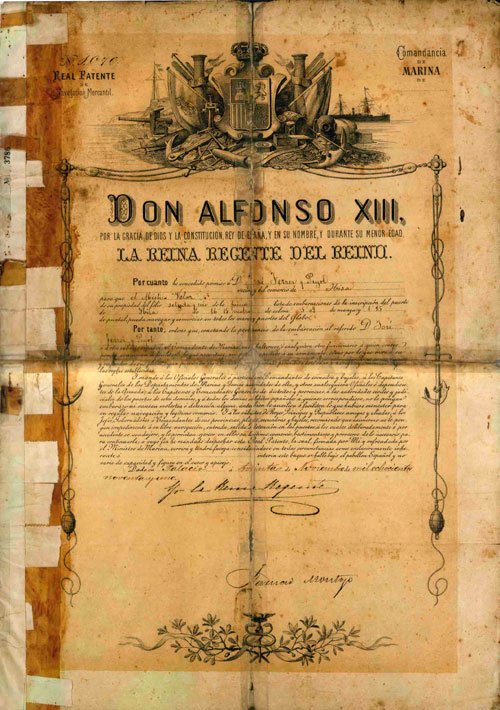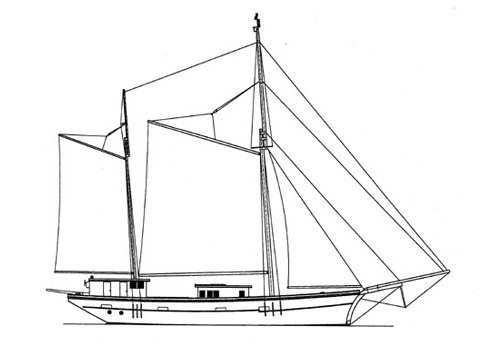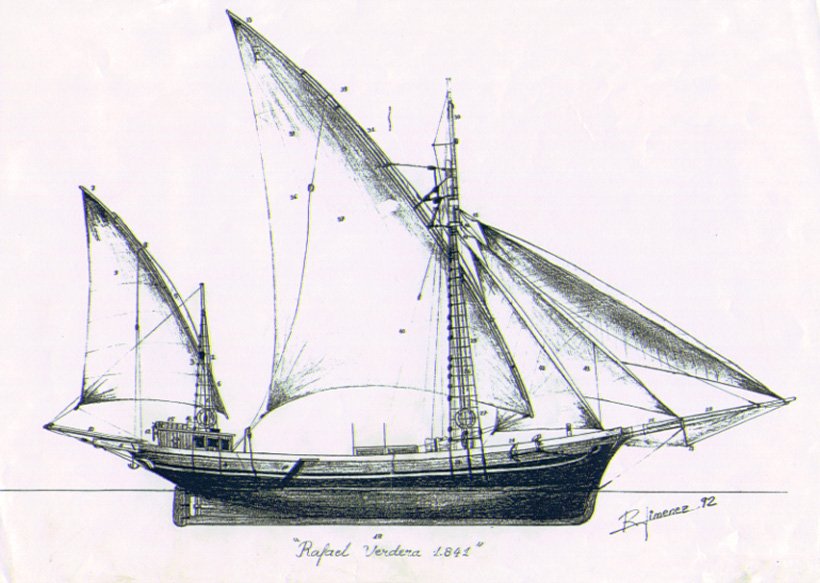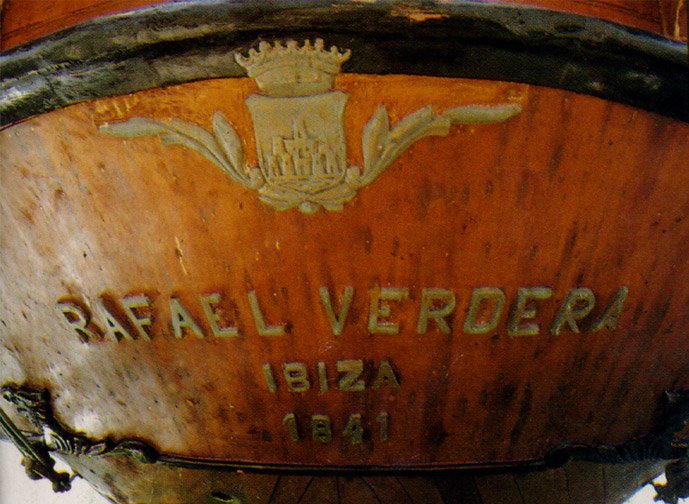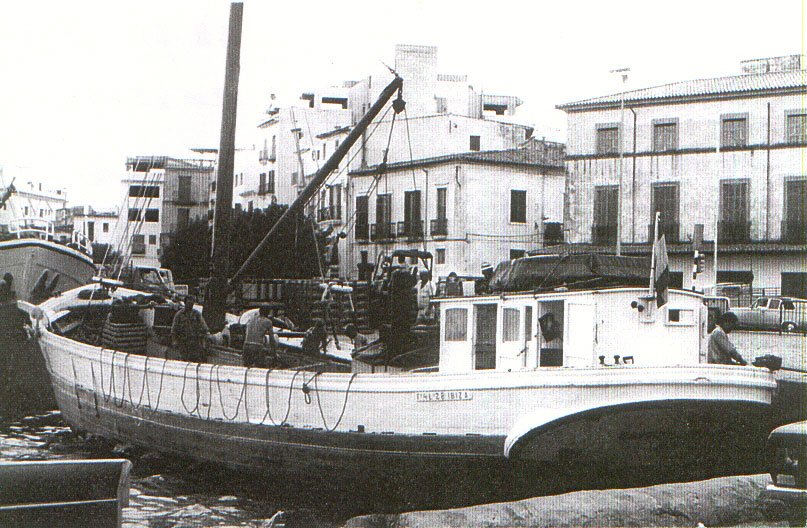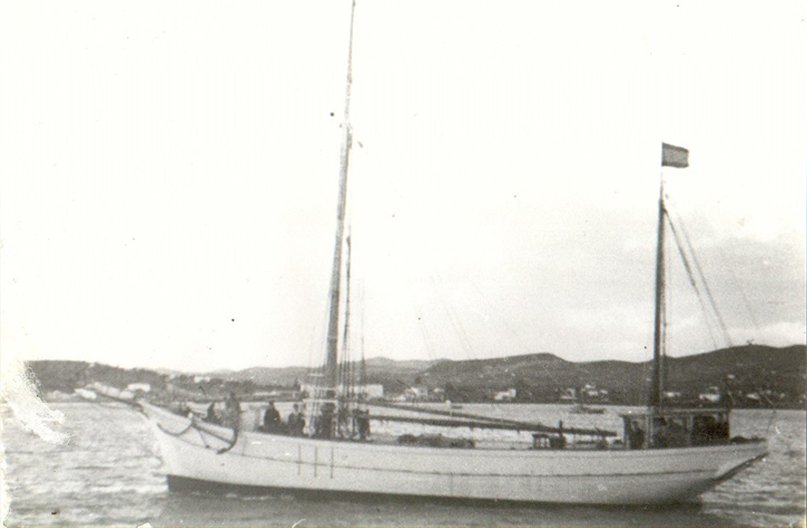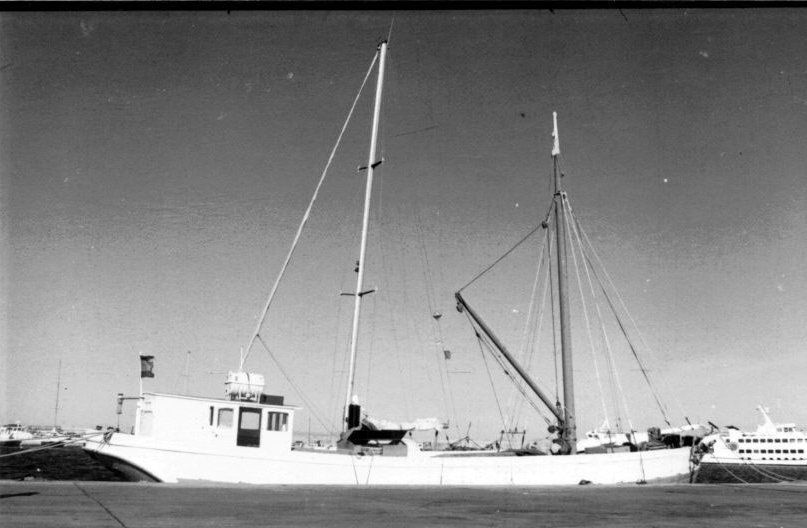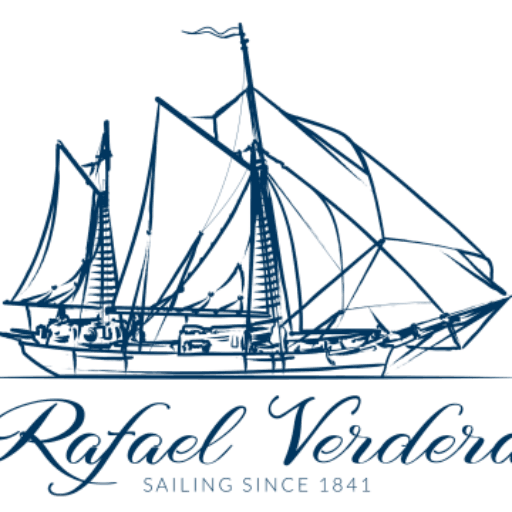GET TO KNOW THE SAILBOAT
RAFAEL VERDERA
THE SOUL OF THE RAFAEL VERDERA
Discovering the Rafael Verdera is like travelling back in time without compromising on comfort. Every figure, every measurement and every sail recounts the tale of this centenarian vessel which proudly continues to sail today. This is her presentation card: the perfect balance between seafaring tradition and modern practicality:
TECHNICAL DETAILS:
| FEATURE | DETAIL |
|---|---|
| Name | Rafael Verdera |
| Year built | 1841 |
| Length | 22 meters |
| Beam | 5.60 meters |
| Sail area | 150 m² |
| Auxiliary engine | Volvo Penta 235 HP |
| Capacity | 60 people (day trips) / 10 people (overnight guests) |
RAFAEL VERDERA
THE SOUL OF THE SAILBOAT, EXQUISITELY DRAWN
Behind every voyage, every wave ridden, and every story told aboard this vessel, there’s a design that made it all possible. These sketches go beyond technical drawings: they are the heart of the Rafael Verdera etched on paper. They are drawings of dreams that would span the Mediterranean. Masterful lines that define her century-old silhouette, blending elegance with practicality, tradition with resilience. Every millimetre calculated is a promise of sea, wind and adventure.
ADDITIONAL FEATURES:
Rig
Ketch rig, with two masts (main and mizzen) slightly raked aft and fitted with topmasts. Gaff sails on both main and mizzen masts, and three headsails set on stays from the mainmast to the bowsprit (staysail, jib, and flying jib), with several additional flying jibs hoisted to the topmast head. A gaff topsail is set on the mainmast. Hydraulic furling systems are fitted to the staysail and jib.Classification
She is classified as a passenger vessel under Group 1, Class G, authorised to carry up to 60 passengers on daytime voyages, with a minimum crew of three.Navigation
Robertson autopilot, Raytheon radar with Mini-ARPA, GPS, Furuno depth sounder with a range of 1,500 metres, navigation computer, and electronic chart plotter.Communications
Shipmate VHF radio with DSC (MMSI no. 224002260), Sailor HF/MF SSB radio (call sign EA2942).Safety
EPIRB, life rafts, rigid tender with 15 hp outboard motor.Extras for divers
Coltri MCH16 compressor (approx. 260 l/min).Appliances
Compac kitchen worktop, mini stereo, ceramic hob, microwave, washing machine, seawater desalination unit, freezer and fridge.Accommodation
The former cargo hold now accommodates up to ten guests in four cabins. The bright and airy space has all the character and simplicity of a wood-hulled cargo ship from more than a century and a half ago. The Rafael Verdera can host 60 guests for day sails, or up to 10 guests for week-long stays.LIVING MARITIME HISTORY
The sailing ship Rafael Verdera, officially registered in Ibiza as entry number 4 in the second register, was launched on 15 April 1841. Today, almost two centuries later, she proudly continues to sail and is the oldest active Spanish sailing vessel today. Among the treasures she carries aboard is the Navigation Licence issued in Ibiza in 1891, signed by Queen Regent María Cristina, who governed during Alfonso XIII’s childhood. The document is a testament to the ship’s longevity, transporting us to a time when official language was still redolent of the sea, and its poetic, seafaring phrasing evokes reverence and admiration. The oldest islanders of Ibiza and Formentera claim that the Rafael Verdera was originally a two-masted llaut rigged as a felucca. Over the years, her silhouette has evolved to meet changing demands and new purposes, yet she has never lost the soul of a true seafarer. To step aboard the Rafael Verdera today is to touch history with your own hands, to hear the creak of timbers that have sailed a thousand routes, and to be carried away by the spirit of a sailboat that has outlived entire generations.MEMORIES TINGED WITH SALT AND DESTINY
They say that every ship carries secrets in its hull and memories in its sails. The Rafael Verdera, a silent witness to a thousand voyages, was much more than just a ship; it was a bearer of hope. In the years leading up to the Spanish Civil War, it travelled to Algiers, carrying cargo and dreams. Young emigrants, full of trepidation and hope, their sights set on distant lands, left home in search of a better future. At the end of the nineteenth century, renamed Veloz and rigged as a Mystico, she established links between the Balearic Islands, other islands in the western Mediterranean, and legendary cities such as Barcelona, Valencia, Marseille, Genoa, Naples and Algiers. After days or weeks of sailing, the ship, its hold laden with stories and merchandise, would reach port.NEW LIFE, NEW NAME
Later, she was renamed María and took on the elegant profile of a sloop, as if reborn with every transformation. But it was in 1932 that she adopted the name that would make her immortal: Rafael Verdera, in honour of one of her owners, who died in a tragic car accident in one of those “crazy contraptions” of the time. Ibiza paid tribute with a grand centenary celebration. Soon after, the vessel was rebuilt as a pailebote, with a rounded stern and a protective bridge sheltering the tiller. Shielded from wind and weather, the Rafael Verdera continued her journey, carrying with her centuries of history and the spirit of the sea.THE WIND CHANGES, BUT THE SHIP ENDURES
In the lean and silent post-war years, the Rafael Verdera was affectionately known as ‘Sa Balandreta’. She carried goods regularly between Palma and Ibiza, her arrival always eagerly awaited. In the island’s warehouses, a hopeful phrase echoed time and again: ‘Quan vingui Sa Balandreta, ho tindrem’ (‘When Sa Balandreta arrives, we’ll have it’). In 1920, after 79 years at sea, she was fitted with her first engine: a 40 hp Otto Deutz. Over the years, this was followed by a Volund in 1934, a Cummins in 1989, and finally, in 2000, two Volvo engines of 145 hp each. The wind remained her true driving force, but mechanical power began writing new chapters in her story. As the century turned, the traditional lateen rig gradually gave way to more manageable sail plans like those of sloops, ketches, and schooners. Nonetheless, the Rafael Verdera chose to swim against the tide, reclaiming her Mediterranean soul. She was refitted with a traditional sail plan inherited from the Tartana, with masts bearing standing rigging and ropes whose names now belong to the past: avantes (stays), guindalezas (peak halyards), trozas (braces), amantes (halyards), ostas (tack lines), cargaderas (brails)… The lateen sails stretch across the masts like taut wings, while the jibs slide along the stays with precision. At the stern, a davits system for the tender and the sheeting gear complete her elegant and seaworthy silhouette. For 14 years, we have lived and sailed aboard this beautiful, unpretentious vessel. With her archaic rig, she taught us the value of simplicity. We have adapted her to the times, to practical needs, to new demands, but never at the cost of her essence.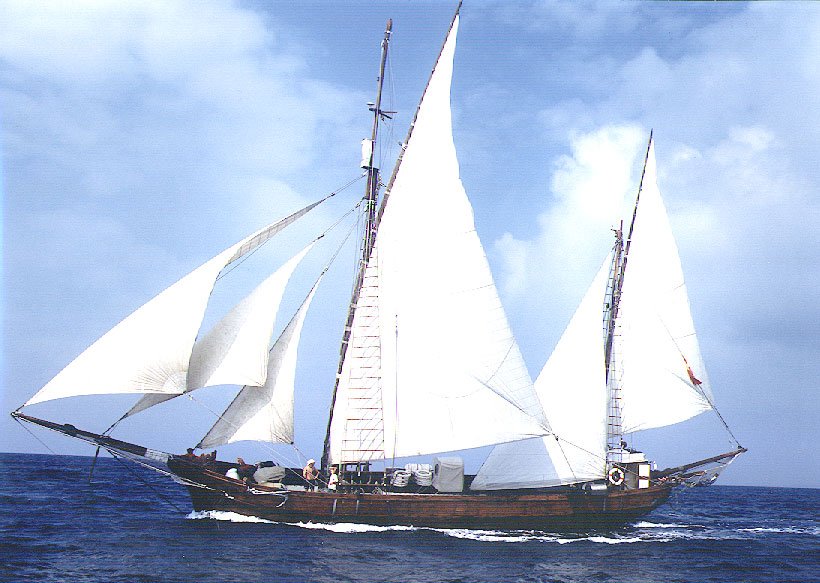
THE ECHO OF TIME
Still etched in memory are the days of tiller steering and rope guards, of the wooden barrel laid on its side to serve as a freshwater tank, the old rocking windlass — slow and heavy, like the rhythms of the past — and the legendary hot-bulb Volund engine… And, of course, those great lateen yards, 22 and 16 metres long, the guindalezas (peak halyards), trozas (braces), and all the seafaring language that adds soul to every movement.NEW CENTURY, NEW LIFE
To embrace the new century and the new millennium, the Rafael Verdera underwent another transformation. She reclaimed the spirit of a balandra (or, in more technical terms, a ketch) and took the final major step in the restoration process begun years earlier. The aft two-thirds of the deck were raised, adding 40 cm at the bulwark and increasing the vessel’s internal volume. The entire layout was redesigned: she now has two engines housed in separate compartments, a spacious engine room, two new above-deck cabins, and a refreshed silhouette that, despite the changes, remains true to her original spirit.rafael verdera
LIVE THE EXPERIENCE
Everything’s ready to set sail
rafael verdera
LIVE THE EXPERIENCE
Everything’s ready to set sail
